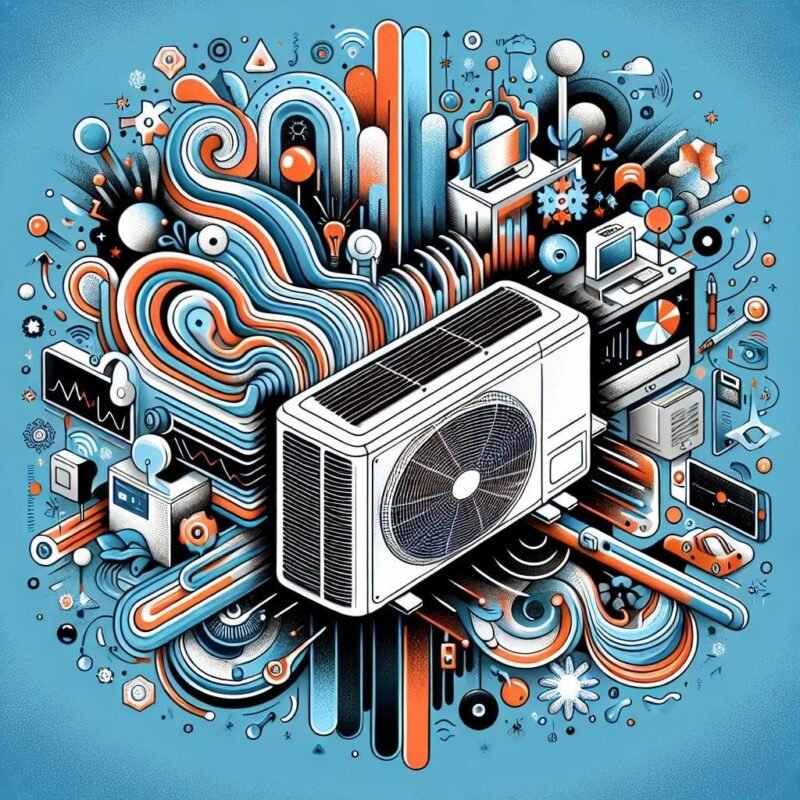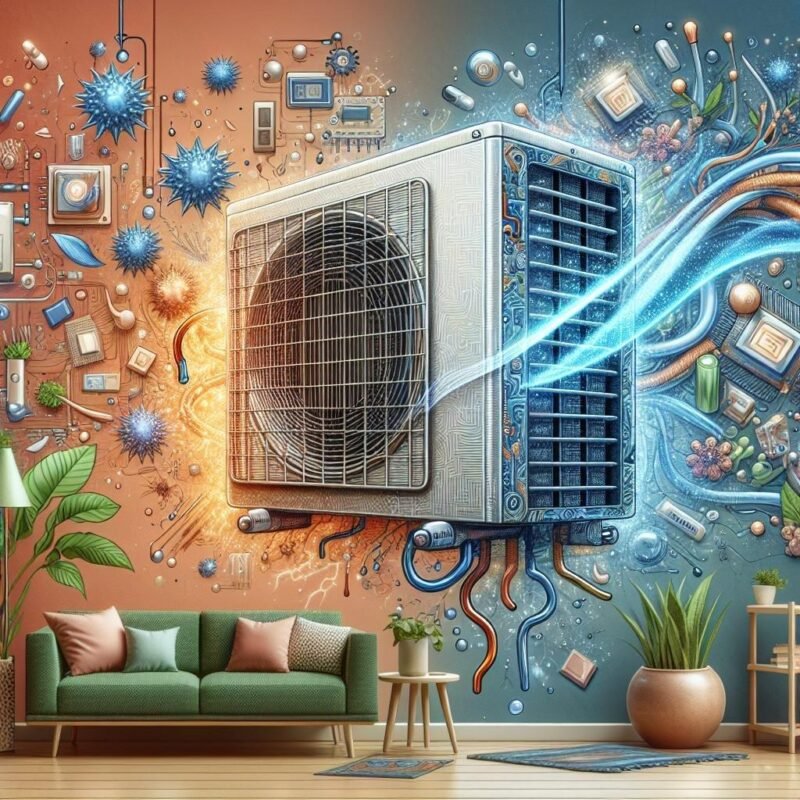Common Installation Mistakes to Avoid with Mini Split AC Systems

Picture this: you’ve finally decided to embrace the cooling comfort of a mini split AC system, dreaming of those perfect indoor temperatures year-round. But hold onto your thermostat! While these sleek, energy-efficient units can be a game-changer for your home, the path to installation nirvana is riddled with potential pitfalls that could turn your cooling dreams into a nightmare. From sizing snafus to placement predicaments, countless DIY warriors and even some pros have learned the hard way that installing a mini split isn’t quite as simple as unboxing your latest gadget. Let’s dive into the most common installation blunders that could make your mini split experience less than split-tacular, and learn how to dodge these cooling catastrophes like a pro.
Improper Indoor Unit Placement: Finding the Sweet Spot for Maximum Comfort
Strategic placement of your indoor unit can make the difference between a room that feels like a refreshing oasis and one that struggles with uneven temperatures. Just like finding the perfect spot for your favorite reading chair, your mini split’s indoor component needs careful consideration. Think about airflow patterns, room layout, and daily activities when selecting the ideal location. Here are the key factors to consider:
- Height sweet spot: 7-8 feet from the floor
- Clearance requirements: At least 6 inches from the ceiling
- Distance from obstacles: Minimum 3-4 feet from furniture
- Avoid direct sunlight: Can affect temperature readings
A common blunder is mounting the unit directly above heat-generating appliances or in corners where air circulation is restricted. Your mini split needs breathing room to perform its cooling magic effectively. Remember that cold air naturally falls, while warm air rises. Positioning your unit on an exterior wall,away from electronics and heat sources,allows for optimal temperature distribution. This thoughtful placement ensures your system operates at peak efficiency while maintaining consistent comfort throughout your space.
| Placement Area | Comfort Impact |
|---|---|
| Center of long wall | Excellent |
| Above windows | Good |
| Corner installation | Poor |
Sizing Blunders That Lead to Energy Waste and Performance Issues
Getting the calculations wrong for your mini-split system can turn your comfort dreams into an energy-guzzling nightmare. When contractors rush through load calculations or skip them entirely,you’ll end up with either an oversized unit that short cycles constantly or an underpowered system gasping to keep up with demand. proper sizing involves careful consideration of room dimensions,insulation levels,window placement,and local climate patterns – not just picking the most popular model off the shelf.
Beyond the basic BTU requirements, failing to account for these crucial factors leads to serious inefficiencies:
- Multi-zone systems with mismatched indoor unit capacities
- Incorrect refrigerant line lengths affecting system pressure
- Poor airflow distribution due to improper handler positioning
- Temperature inconsistencies from inadequate zone planning
| room Size (sq ft) | Recommended BTU |
|---|---|
| 150-250 | 6,000 |
| 250-400 | 9,000 |
| 400-650 | 12,000 |
Line Set Nightmares: Getting the Right Length and Proper Installation
Getting those copper refrigerant lines just right can feel like solving a puzzle blindfolded. Too short, and you’re stuck with an expensive do-over. Too long, and you risk oil return issues that could spell disaster for your compressor. The golden rule: measure twice, cut once, and always factor in the path your lines will take, including bends and obstacles. remember that proper insulation and a gentle slope for drainage are non-negotiable – skipping these steps is like sending an invitation to condensation problems and reduced efficiency.
When running your line sets, treat them like delicate arteries that keep your system alive. Avoid these common pitfalls that make HVAC pros cringe:
- Kinked or crushed lines from overly tight bends
- Unsupported spans sagging under their own weight
- Exposed copper vulnerable to physical damage
- Missing or damaged line set insulation
- Incorrect flare connections leading to refrigerant leaks
| Line Set Issue | Impact |
|---|---|
| Excessive Length | Reduced Efficiency |
| Poor Insulation | Energy Loss |
| Incorrect Sizing | System Failure |
Drainage System setup Gone Wrong: Preventing Water Damage and Leaks
When installers rush through the condensate drain setup, thay’re playing a risky game that could lead to serious headaches down the road.A poorly designed drainage system can turn your indoor unit into an unwanted indoor fountain, causing water to drip onto your floors, walls, and valuable belongings. The most critical mistakes often occur when the drain line isn’t properly sloped, or when contractors use incompatible drain pipe materials that crack under pressure.
To safeguard your space, ensure these essential drainage components are properly addressed:
- Install a secondary drain pan with a water sensor
- Maintain a minimum 1/4 inch per foot slope for proper drainage
- Use UV-resistant PVC pipes for outdoor sections
- Include a P-trap to prevent air locks
- Install clean-out access points for maintenance
| Common Drain Issue | Prevention Method |
|---|---|
| Clogged Lines | Monthly vinegar flush |
| Frozen Drainage | Insulated piping |
| Overflow Events | Float switch installation |
Q&A
Q&A: Common Installation Mistakes to Avoid with mini Split AC Systems
Q1: What’s the first common mistake people make when installing mini split AC systems?
A1: Ah, the excitement of a new cooling system can sometimes lead to hurried decisions! One of the top blunders is skipping the site assessment. It’s essential to choose the right location for both the indoor and outdoor units. An improper placement can lead to inefficiencies, uneven cooling, and excessive wear on your system. So, take a deep breath, step back, and survey the space before making any moves!
Q2: Is it really that significant to consider the size of the mini split AC unit?
A2: Absolutely! Size matters—at least when it comes to climate control. One of the most common mistakes is opting for a unit that’s too small or too large for the space. A unit that’s too small won’t keep you cool, while one that’s too big will cycle on and off, leading to inefficiency and higher energy bills. A little calculation goes a long way, so consult a professional to determine the right size for your space!
Q3: Are there any installation mistakes that could affect the system’s efficiency?
A3: You bet! One frequent boo-boo is not properly insulating the refrigerant lines.If those lines are left exposed without insulation, it can lead to energy loss and decreased efficiency. Treat your mini split to a cozy wrap by insulating those lines—it’s a small step that keeps your system performing like a champ!
Q4: What about the electrical setup? Can mistakes there be problematic?
A4: Oh, most definitely! Underestimating the importance of a proper electrical setup can send shockwaves through your installation process.It’s crucial to use the correct wiring and circuit breakers to accommodate your mini split’s power needs. Incorrect electrical connections can not only cause performance issues but may also increase fire risks. If you’re unsure, don’t hesitate to call in a certified electrician for a helping hand!
Q5: do I need to worry about the drainage system?
A5: Yes, indeed! A common oversight that many DIYers make is not installing the drainage line correctly. improper drainage can lead to water pooling, which not only damages the unit but can also become a mold magnet! Make sure your drainage line has the right slope for effective water removal.Nobody likes an indoor swimming pool—except when it’s summer and you’re lounging by a real one!
Q6: Can I install a mini split AC by myself?
A6: While the thought of a DIY project can be tantalizing, we advise caution! Mini split installations involve refrigerant lines, electrical wiring, and precise alignments.If you’re not comfortable with this kind of work—or if it’s your first time—it’s frequently enough best to hire a professional. They’ll ensure everything is done right, and you can enjoy your cool oasis stress-free!
Q7: What’s the best way to avoid these common mistakes altogether?
A7: Planning is key! Before diving in, do your research—watch videos, read user manuals, and perhaps consult with an HVAC professional. Also, don’t hesitate to ask questions and request help if you’re unsure. Remember, a little preparation can go a long way in keeping your mini split AC system running smoothly and efficiently. Now, go forth and conquer that cooling challenge with confidence!
Q8: Any final thoughts for homeowners considering a mini split installation?
A8: Embrace the journey! While there may be challenges, the end result—a comfortable home oasis—makes it all worthwhile. Avoid the common pitfalls by staying informed, taking your time, and seeking professional help when needed. Happy cooling!
In Retrospect
As we wrap up our journey through the world of mini split AC installations, remember that knowledge is your best ally in creating a cool and comfortable oasis in your home.By steering clear of these common pitfalls, you not only protect your investment but also ensure that your mini split system runs efficiently for years to come.
picture your home as a cozy retreat, with refreshing air swirling through every room, all because you made informed choices during installation. Whether you’re a DIY enthusiast or calling in the pros, keep these tips in your back pocket to sidestep the bumps along the way.
so, as you embark on your mini split adventure, stay cool, stay savvy, and most importantly, enjoy the breeze! Here’s to a refreshingly comfortable space that you can truly call your own. Happy installing!






















